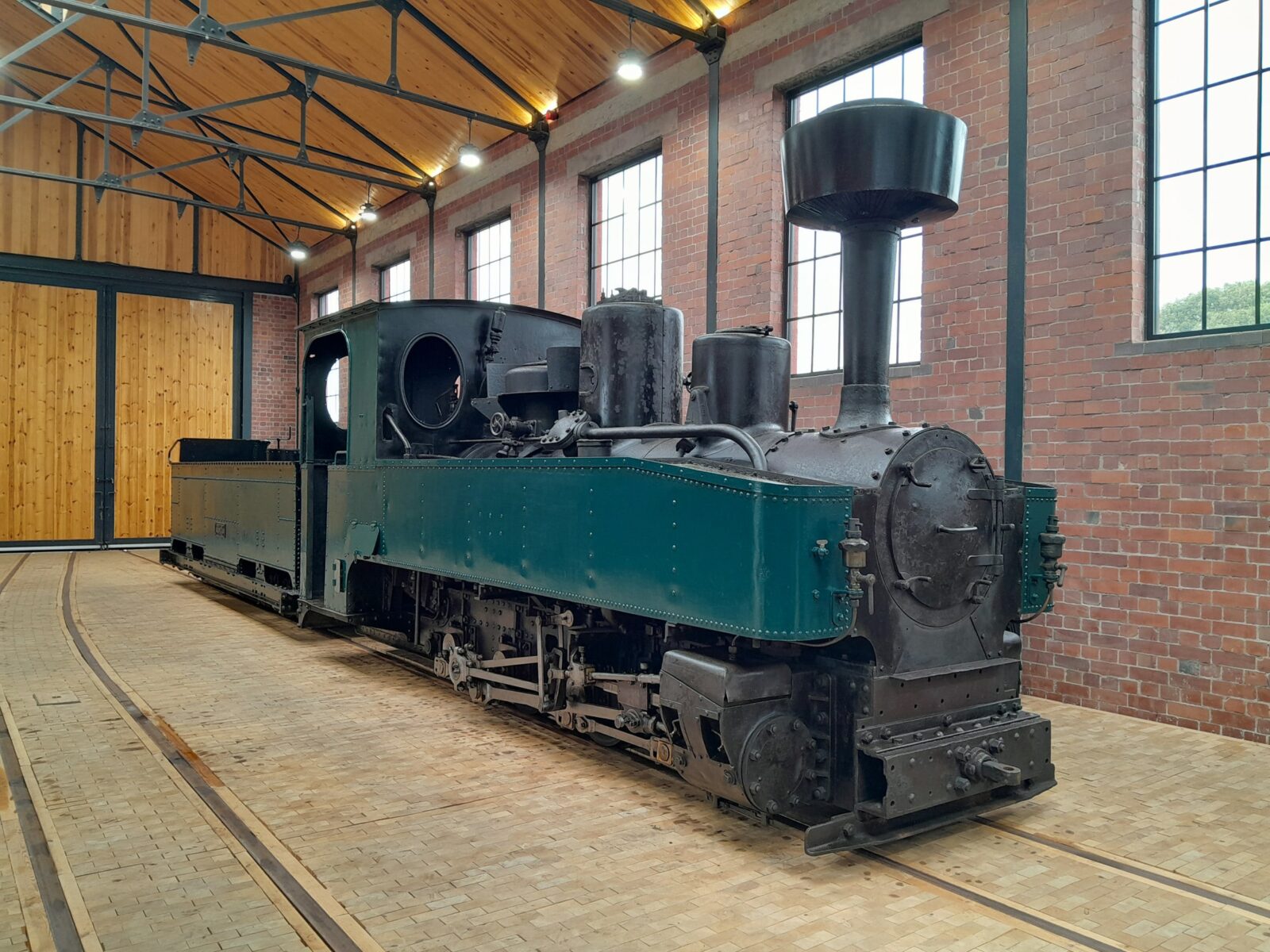A new historic locomotive exhibit has been placed on display in The Vale of Rheidol Railway’s Aberystwyth museum, just in time for the summer holidays.
The locomotive, known as ‘the Brigadelok’, was built in Germany in 1916 for use in the First World War. Small steam locomotives such as this one worked on lightly laid narrow gauge railways, helping to carry munitions and supplies to the forces on the military front line.
The locomotive has an unusual chimney, containing a spark arrestor which avoided sparks giving away the location to British forces when working at night, as well as preventing accidents when pulling train-loads of munitions!
The ‘Brigadelok’ will be on display in Aberystwyth throughout the summer. This is the first time the engine, which has been in the railway’s collection since 2002, has been formally put on public display.
The museum also houses a very early Dick Kerr petrol-electric locomotive, built in 1918, which was designed to do similar jobs to the Brigadelok.
The railway is therefore able to display genuine artefacts from the British and German sides, both of which saw service during the First World War.
Unusually, the Brigadelok is being displayed in Aberystwyth with a large tender coupled to it because steam locomotives require water to make them work. On most railways, water is taken from a fixed column, called a water tower, connected to the mains supplies.
Military locomotives like the Brigadelok would not have this luxury, however. They were expected to work over lightly laid railway lines, carrying munitions over boggy ground.
They would take water by pulling a large auxiliary tender, like a water bowser, thereby increasing the locomotive’s range. The locomotive is therefore displayed in this way, with a tender coupled to the locomotive.
The engine was also fitted with a water lifter, like a pump, allowing it to pick up water from streams or rivers if needed.
The Brigadelok is displayed in the railway’s new Museum, Display & Events venue at Aberystwyth Station which opened in late March and contains a wide collection of narrow gauge locomotives from across the world.
The building is also designed as a flexible space for concerts, recitals and community events. The railway and museum are open daily until November 3. Tickets for the museum cost £5 for adults and £3 for children, or entry is free for those travelling on the train.








Leave a Reply
View Comments